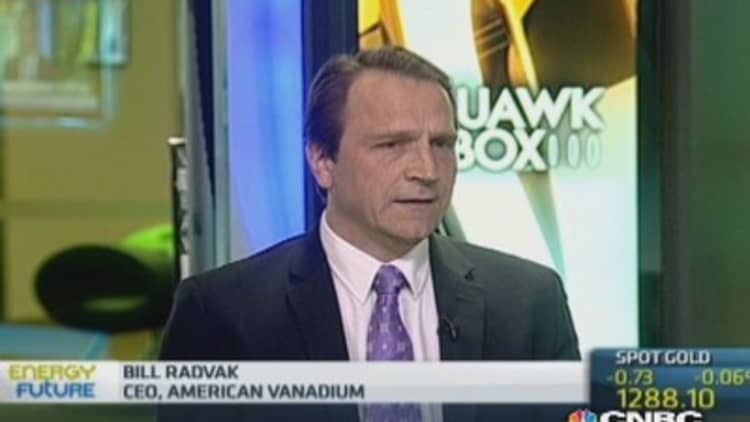Predictions that solar energy will disrupt and replace the current electricity grid system may be premature, with analysts noting urban settings are likely to remain dependent on traditional delivery methods for a while yet.
"The problem is solar or wind or some of the other main intermittent renewables only work when the sun is shining or when the wind is blowing or when the tide is moving," said Lord Ronald Oxburgh, chairman of the Science & Technology committee in the U.K.'s House of Lords as well as a former non-executive chairman of the U.K. arm of Royal Dutch Shell.
Read More Has solar power's day in the sun arrived?
"None of these things will work unless you have some means of storing energy," he said on the sidelines of CNBC's EnergyFuture brainstorming event Tuesday. "You've got to have some backup and your backup at the moment looks like fossil fuels."
That's been the experience of import-dependent Singapore, which is keenly interested in cutting energy use.
"By using solar energy, we are not going to be able to be self-sufficient," said Dr. Liu Thai-Ker, chairman for the Centre for Liveable Cities and a former head of Singapore's Urban Redevelopment Authority and its Housing Development Board. "But we'll try to use solar energy to supplement the energy supply as much as possible," Lui said on the sidelines of the EnergyFuture event.
He noted the island nation has few other renewable energy options besides solar as it doesn't have strong winds or currents or large rivers, while due to the country's small size, nuclear power is too dangerous.
The declining price of installing and using solar power has led many analysts to expect it could effectively compete with and displace fossil fuels, as well as weighing on the finances of traditional electricity distributors.
Read More Solar power's 'a decade-long story': Pro
Solar could reshape the market within 10 years, Bernstein Research said in an April note. Many companies are also stepping up solar installations. Wal-Mart, for example, has said it wants to switch to 100 percent renewable power by 2020.
"Great ideas, but they're incomplete without another technology," Oxburgh said. "You're really talking about fancy batteries. And they exist, but they're really too expensive for general application."
To be sure, analysts expect the batteries, and lower prices, are coming. In the April report, Bernstein said it expected moves by distribution utilities to protect their revenue from solar's incursions would make battery storage more cost effective compared with the grid.
Read More Why Asia's utilities may welcome solar disruption
"A failed battery technology in the auto sector (too hot, too heavy, too rigid a form factor) might well be perfect for the home energy storage market," Bernstein said then.
Others also expect the batteries will become cheaper.
"Historically, EV (electric vehicle) battery prices were high because they were customized to large formats, with limited production runs, making each battery much more expensive (per kWh) than the smaller models used to power consumer devices," Barclays said in a note last month. But with electric carmaker Tesla bundling cheaper laptop cells into batteries large enough to power vehicles, it reaped production efficiencies and brought prices down, it noted.
"The power required to operate an electric vehicle can power the average home for 2-3 days," Barclays said.

Within an urban setting, there are also expectations that the solar panels themselves can reduce overall energy use.
"If you put it at a suitable distance above the flat roof, it not only generates energy itself, it also reduces the heat transmission through the top floor," Liu said. "It is really kind of a joint effort."
He noted the city-state is taking other steps to cut energy use, including orienting buildings in a north-south direction, rather than east-west, to minimize sun penetration and cut the use of air-conditioning.
Read More Solar gadgets that could save the planet
In addition, Liu noted it's possible to put greenery on the buildings, especially facades with high sun exposure, to reduce reflected heat on the ground.
It's a plan recently put into practice by the ParkRoyal Hotel in the city-state's central business district, which, in addition to using solar power for landscape lighting, also has four flours of "sky gardens," as well as using natural light whenever possible.
—By CNBC.Com's Leslie Shaffer; Follow her on Twitter @LeslieShaffer1




